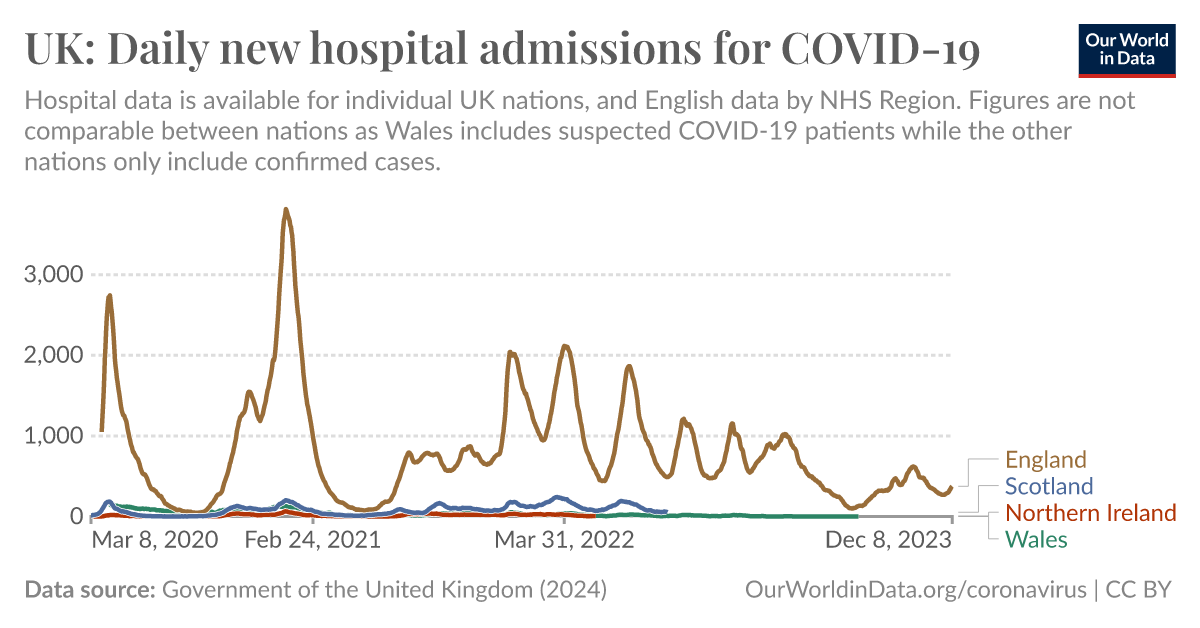Your data seems different than mine ... their restrictions are also much laxer (is that a word?)
Your data ended on December 24th (and I couldn't even tell if there are data quality issues on the last two days of that chart - if I had to guess, I'd think it's delayed reporting). And what does hospitalization has to do with restrictions? The latter should only affect the infection rate, not the rate of hospitalization among those who had been infected (generally speaking).
AoD
King of research on hand to help...........LOL
Lets look at this to start:
For clarity:
Data current to Dec. 28th.
Note that that this is people in hospital who happen to test positive for Covid (or have within the preceding 14 days), not people admitted due to symptoms from Covid.
****
Now let's examine more closely:
Based on data current to Dec 21st:
The
most up-to-date NHS data show that on December 21, there were 6,245 beds occupied by coronavirus patients in English hospitals - an increase of 259 from the previous week.
But within that increase, just 45 patients were admitted because of the virus, with the remaining 214 in hospital for other conditions but having also tested positive - so called “incidental Covid” admissions.
The above from:
https://www.telegraph.co.uk/news/20...hould-treated-caution-many-patients-admitted/
***
Lets further note the differences between the data offered by DN and AoD
The former is for the UK, the latter is for England.
Not the same data set.
****
One can play with the numbers, depending on what you choose to include........
That said, what can be factually assessed is that in England, as compared with early November, about 50% more patients who are admitted are testing positive for Covid.
However..........the total number of admissions is up substantially less than that............reflecting both hospital-acquired infections, and what the UK are terming 'incidental Covid infection' where that is not the primary reason for the patient's admission to care.
****
Put simply, the evidence suggests cases are spreading, but serious illness, not so much.
I'm not going to suggest that will not change...........but the current evidence does not support that conclusion, in the UK, best as I can discern.






